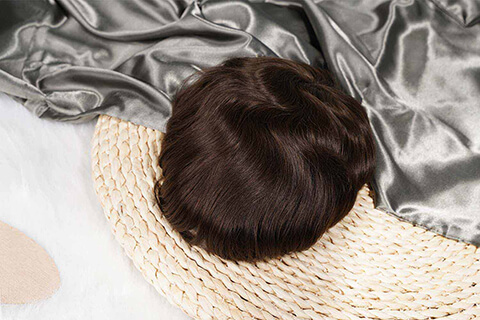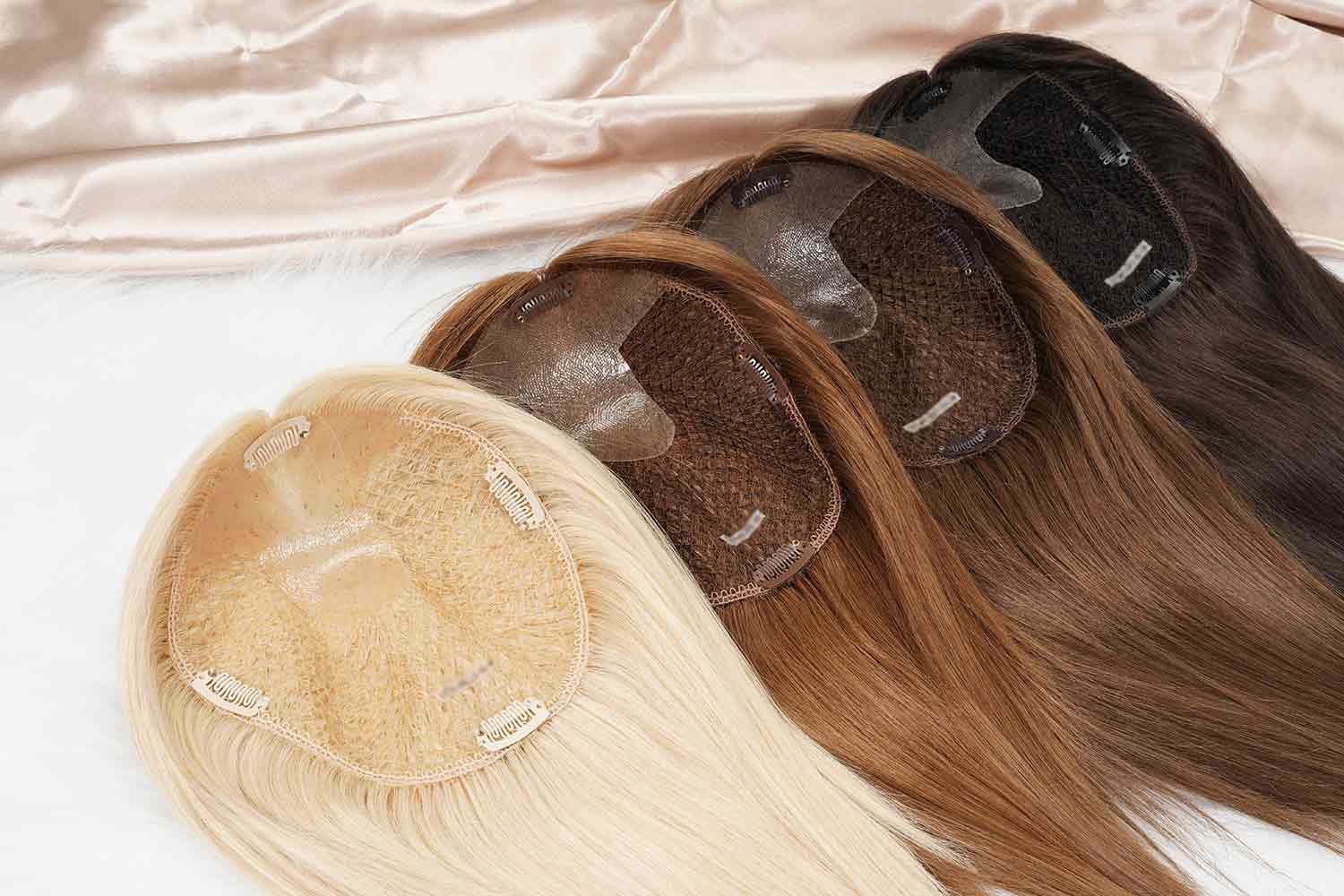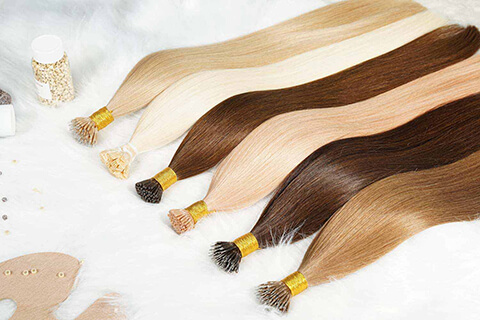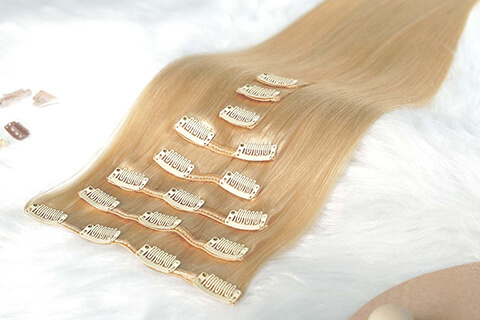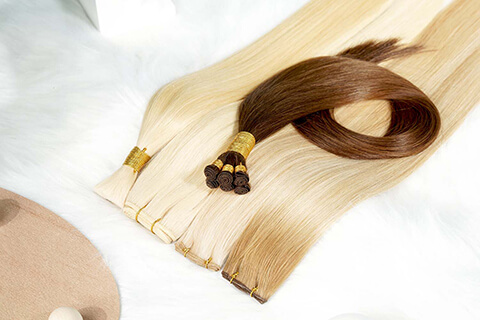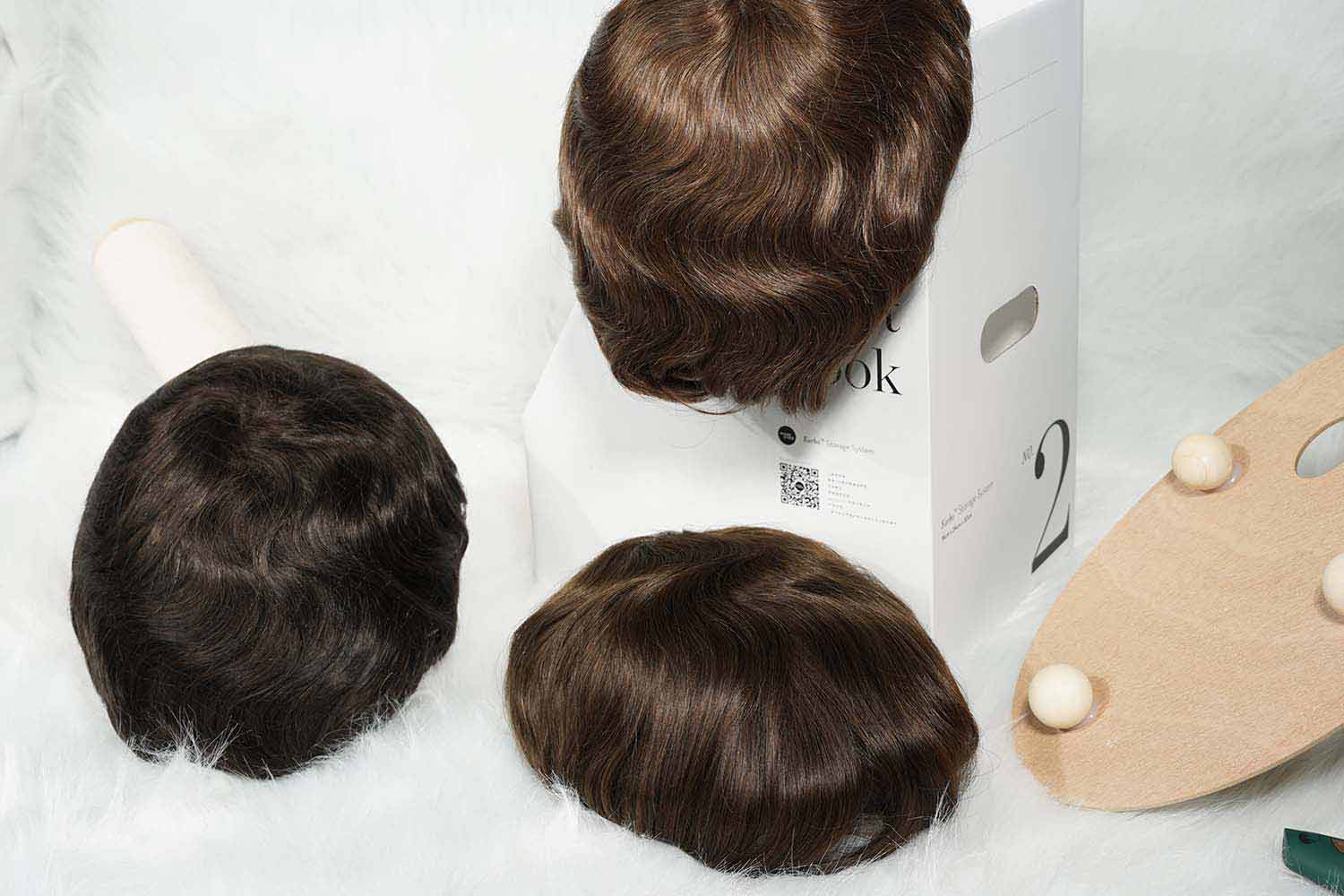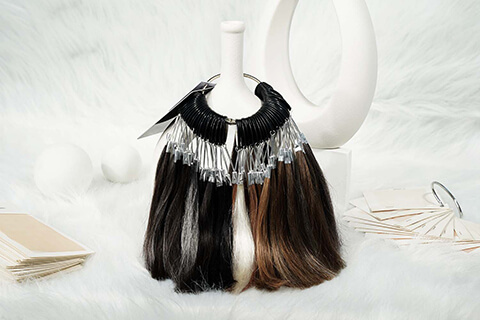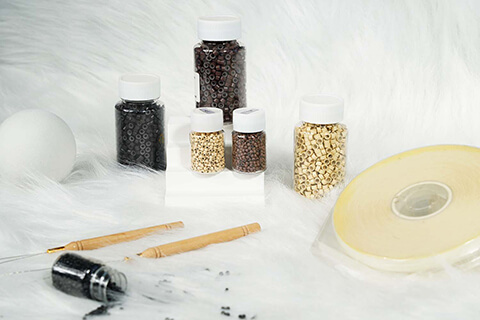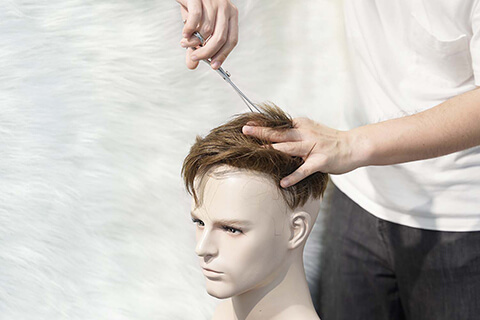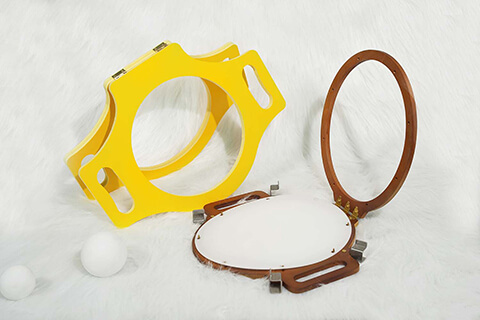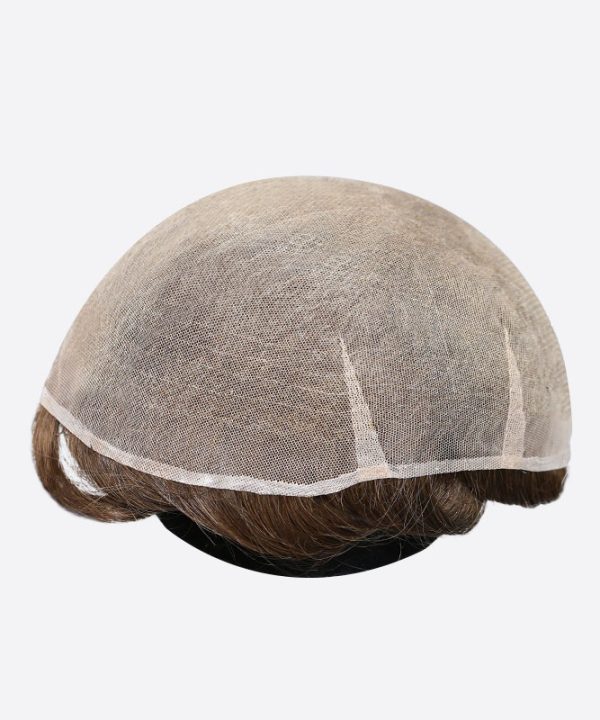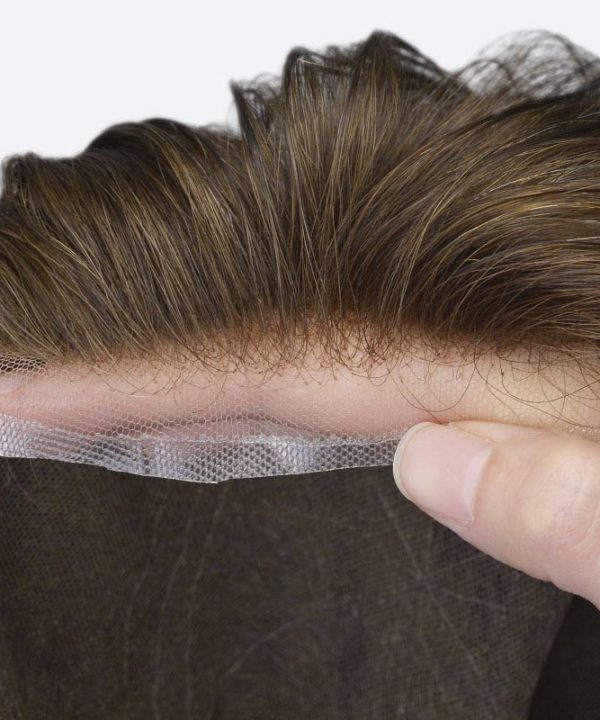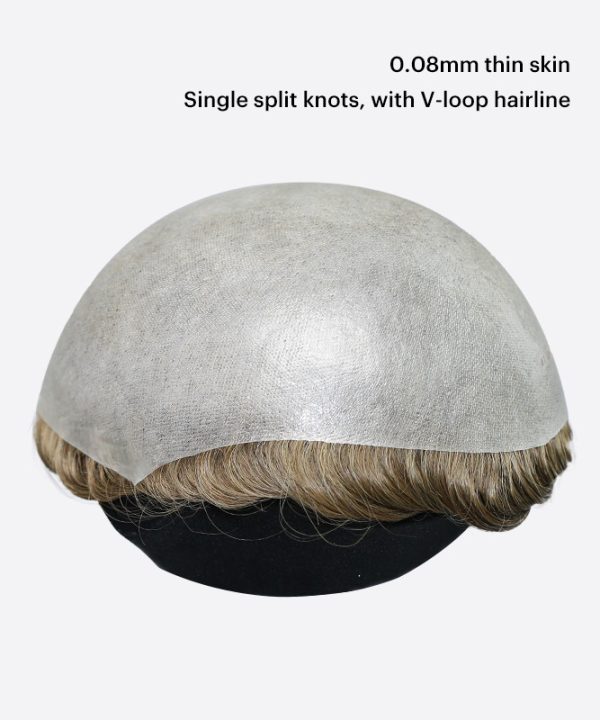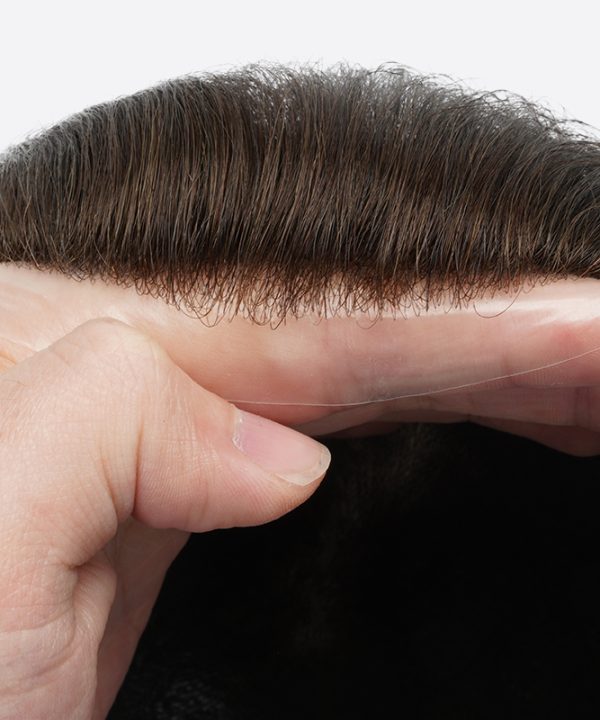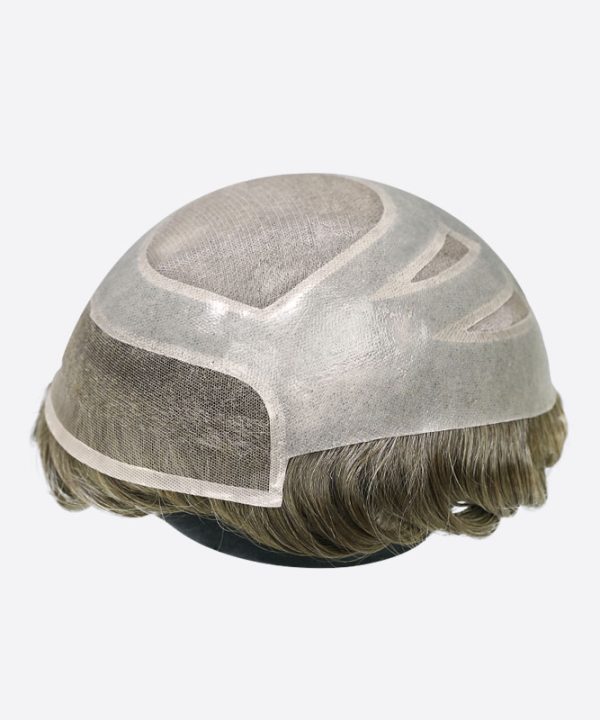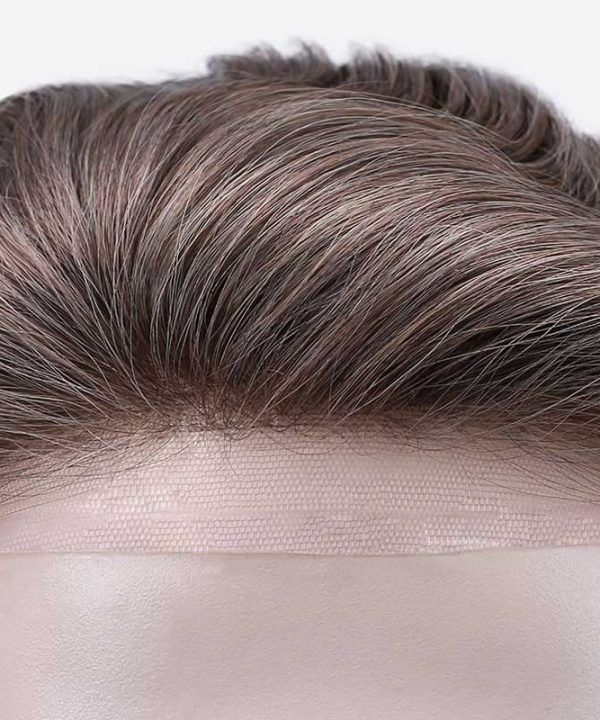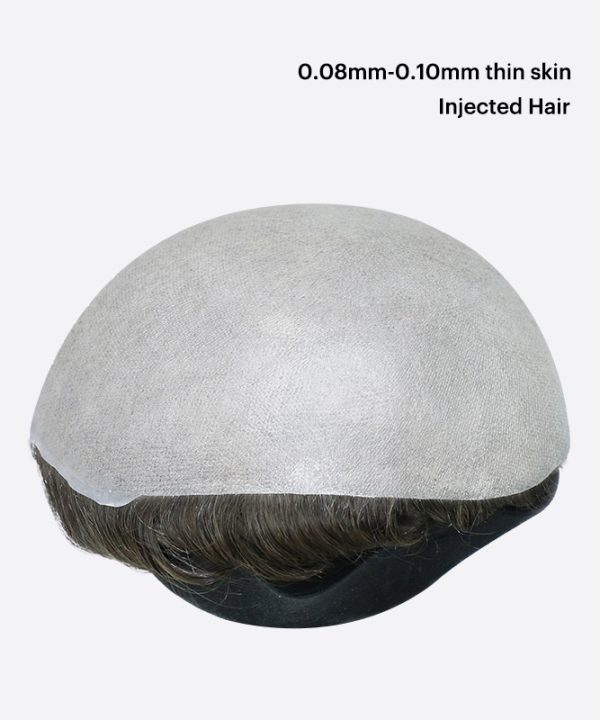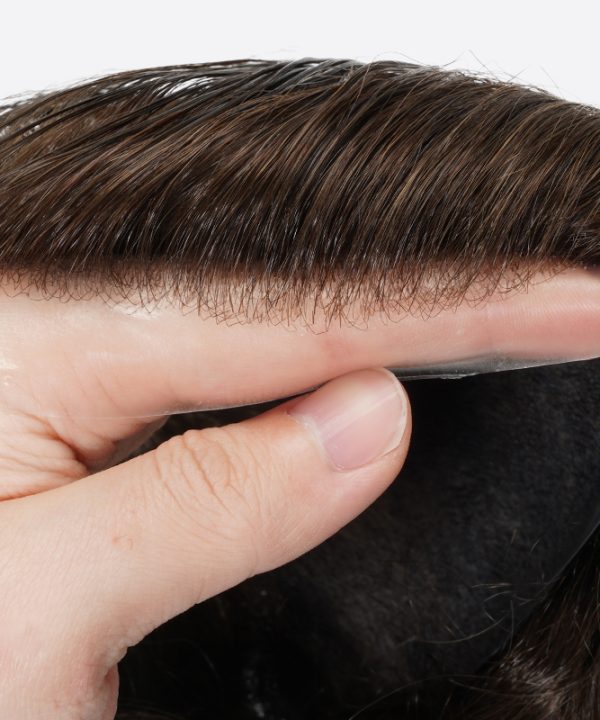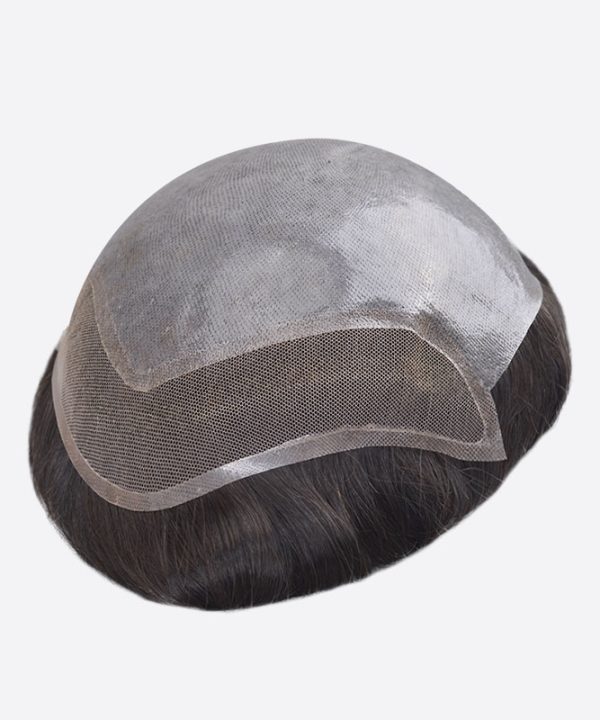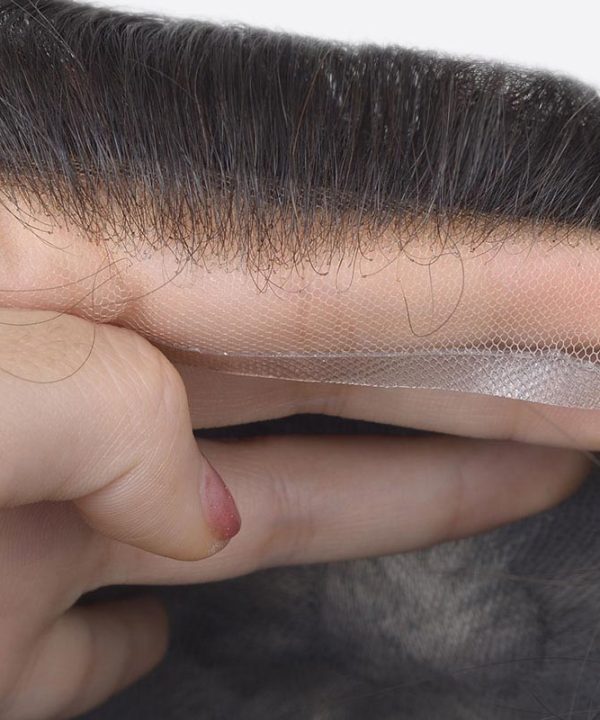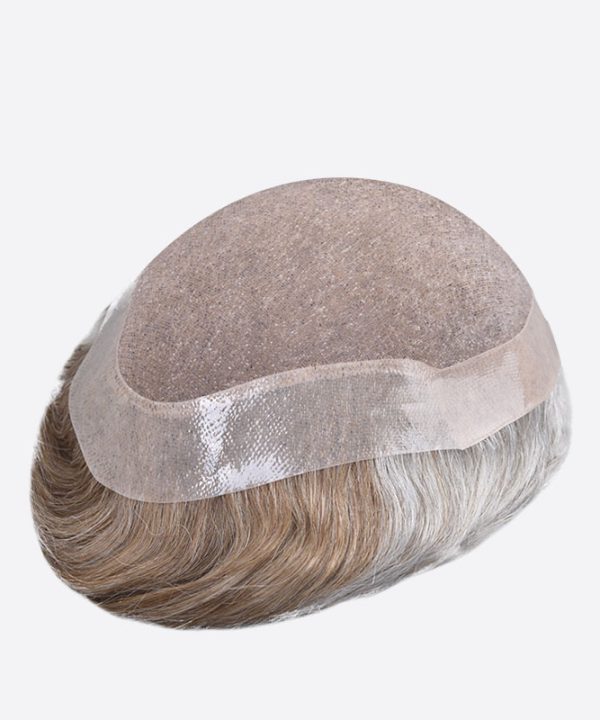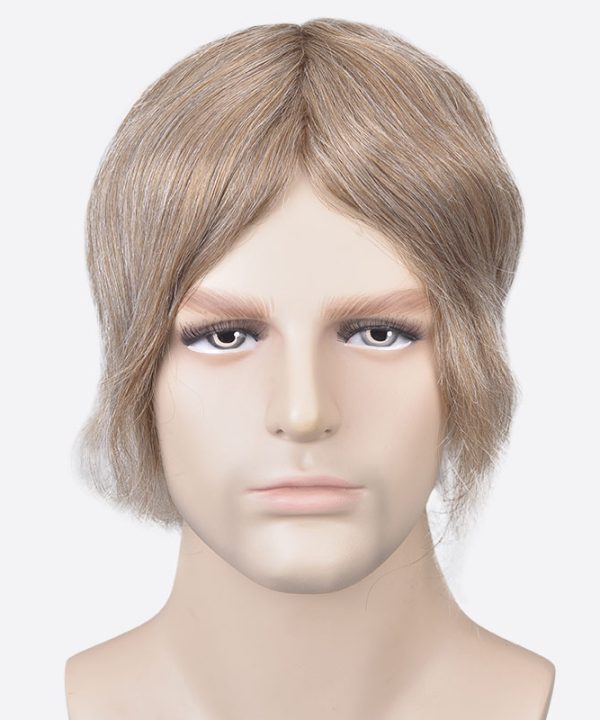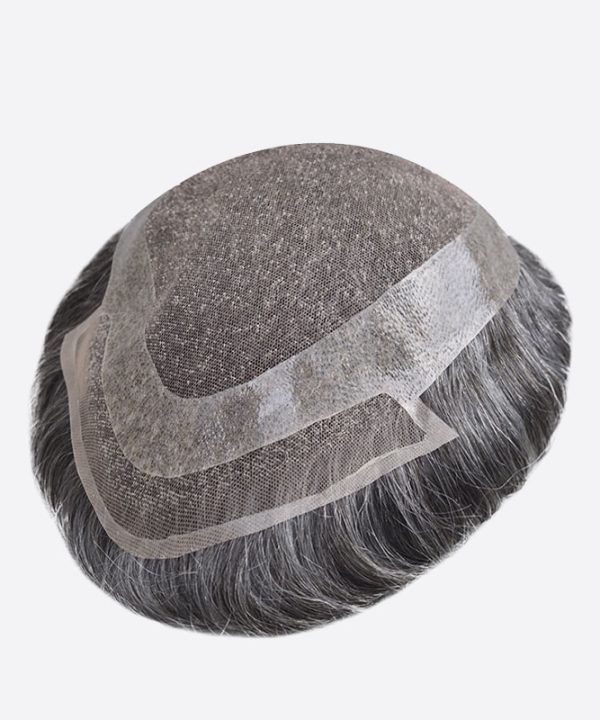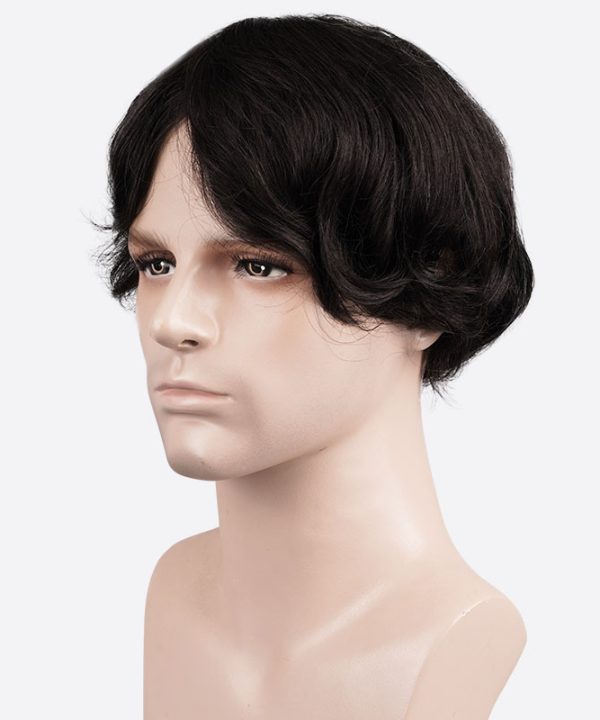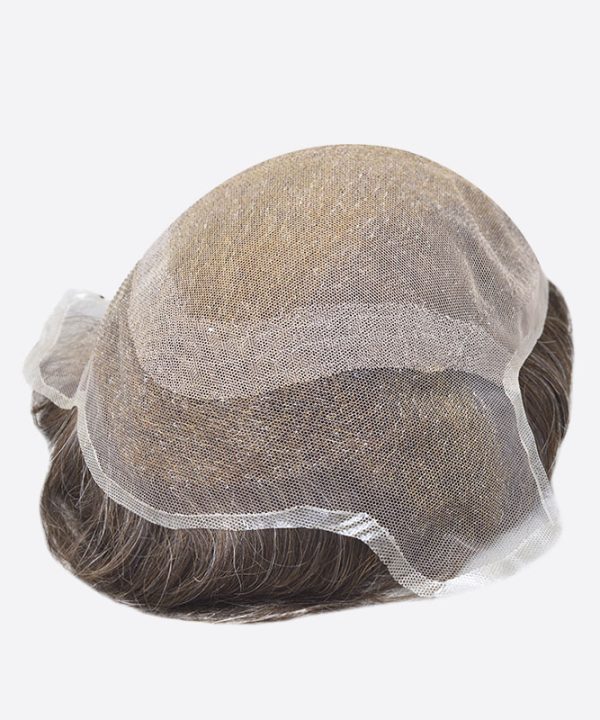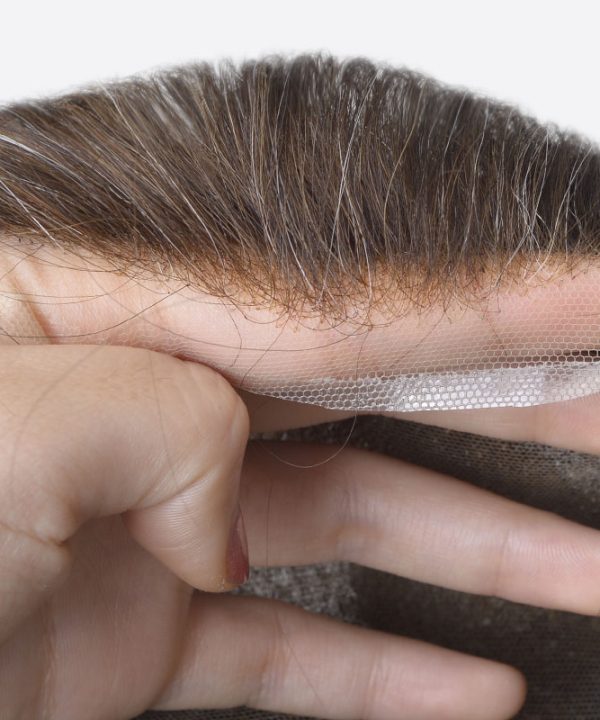“When Helena was just seven years old, she lost her hair due to cancer. Her parents could not afford to pay for the expensive transplant treatments, and Helena was also too young to take medication that would have helped her grow new hair. She was terrified of facing the world without any hair at all.
But then, one day, she discovered something amazing. There was a fairy who could help her – the Hair Fairy! This magical being gave Helena a beautiful wig that made her look like a princess with long, Rapunzel-like hair. With the confidence boost from her new wig, Helena was finally able to face the world again – and she even started feeling better about herself too.
Thank you, Hair Fairy!”
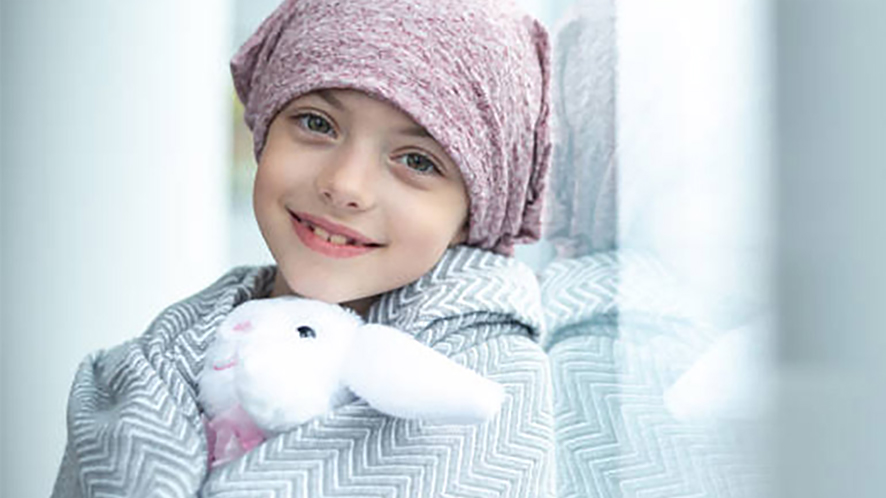
It is no secret that hair loss can be an extremely emotional experience. Regardless of one’s age, hair loss can be physically and emotionally painful.
Did you know that hair loss is not just a problem for adults? Children and teenagers can also experience hair loss for many different reasons.
It is normal for children to lose between 50 and 100 hairs per day. However, when hair loss becomes excessive, it can be a cause for concern.
In this article, we will discuss the causes of hair loss in children and teenagers and how to address the problem. We will also provide information on treatment options available to those affected by young-age hair loss.
PREVIEW
- Introduction
- What will cause hair loss in a child?
- When to see a doctor?
- What are treatment options for hair loss?
- Wigs for kids
- How to choose a wig for children?
- How to clean and maintain wigs?
- Where to buy kid’s wigs?
- Conclusion
Introduction
Hair is seen as an important feature in physical appearance. It is also highly indicative of personality. That is why politicians and public figures wear hairstyles that are well-judged and well-aligned with the personality they wish to project.
For men and women, having thick hair has always been seen as a matter of pride and beauty; thus, losing hair can be painful at any age.
When most people think of hair loss, they think of adults. It is often seen as a natural part of the aging process. However, hair loss can also happen in children, and it can be a very difficult experience for them.
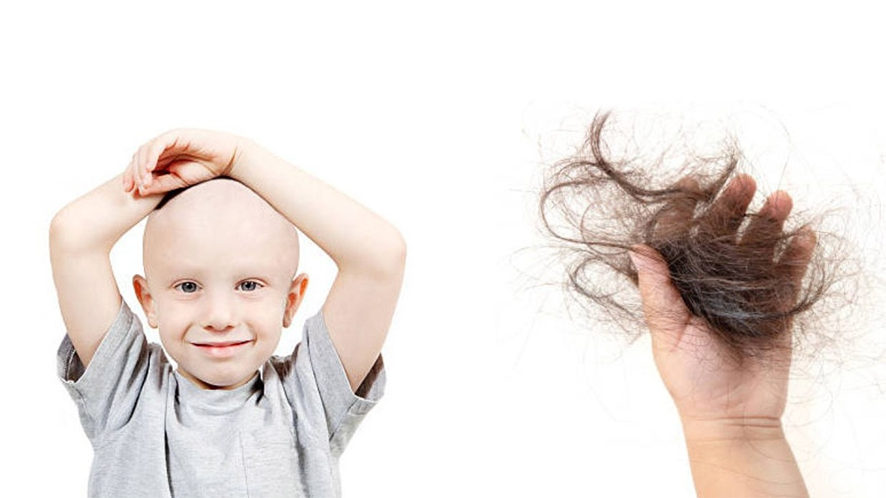
Hair loss among children and teenagers is a huge problem that requires immediate attention. The number of people suffering from this condition has steadily been on the rise, with some studies suggesting up to 30% may experience early onset alopecia in their childhood years.
The symptoms are different for every person but usually include shedding hair in handfuls while also experiencing scalp infection, itching, or sensitivity in some cases.
It is important to know the root cause to treat this problem better. Hair loss can be caused by a variety of factors, including genetics, age, hormones, diet, and lifestyle.
While there is no one-size-fits-all solution to hair loss, there are a number of treatments available that can help restore hair growth. From medications to transplant and alternative hair replacement systems, a lot of treatment options are available that fit the preference and budget of the sufferer.
Adults also try several hair care products on their own. However, while dealing with a child, discussing the issue with a pediatrician or dermatologist is recommended as self-medication can be fatal for children or even teenagers.
What Will Cause Hair Loss In A Child?
There is a wide range of causes for hair loss in children. A child’s pediatrician will be able to diagnose these diseases and prescribe the treatment that works best for them; however, a few common causes of hair loss in childhood could be:
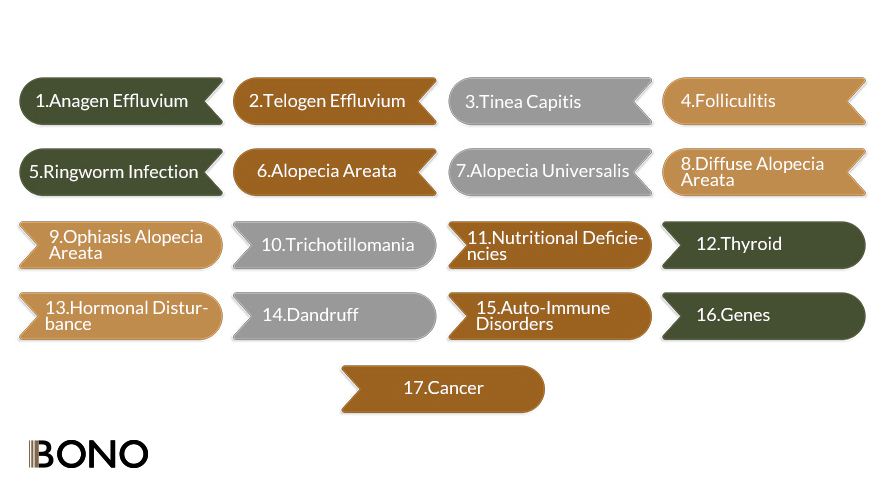
-
Anagen Effluvium
Hair during the Anagen phase grows rapidly as the normal part of the hair regrowth cycle. The process needs not to be interrupted; otherwise, the hair follicles could stop producing new hair. Any toxic substance like medication, radiation, or infection can hinder the normal Anagen process, which leads to hair loss in children.
The hair falls off at the normal speed, but hair regrowth stops, due to which the scalp starts to become visible after a few weeks.
-
Telogen Effluvium
Hair loss resulting from a sudden shock or trauma is known as telogen effluvium. The condition is usually reversible, and hair will grow back once the effect of such an event has subsided. This type can be caused by anything like witnessing death in family members, accidents involving illness/injury, or experiencing bullying.
Any type of failure and unexpressed emotions could also lead to hair loss in children. Therefore, it is important to encourage children to freely share their thoughts and feelings.
-
Tinea Capitis

Fungal infections often attack hair follicles, causing circular bald patches. Fungal infections can be treated with medication if the person seeks medical attention soon enough after the symptoms occur. Swelling, itching, scarring, redness, and dry scalp are a few common signs of Tinea capitis in children.
-
Folliculitis
Folliculitis is the infection of hair follicles. Hair loss due to follicle infection is a temporary type of baldness that can happen due to an inflammation in the scalp skin cells. Antifungal oral medications and topical ointments are used for treatment, after which hair naturally grows back on its own.
Cleanliness and maintaining scalp hygiene are very important to avoid developing folliculitis. Young children tend to neglect proper scalp washing and conditioning, which may lead to the accumulation of sebum and debris over the scalp. This makes room for various infections and bacterial growth inside hair follicles.
-
Ringworm Infection
Ringworm infection is a common cause of hair loss in children. The symptoms include excessive itching, redness, and ring-like outgrowths. Children often scratch the scalp badly to relieve the itching, which leads to breakage and hair loss. These infections are treatable, and hair regrows once the infection subsides.
Hair loss in these types of infections is also localized to the areas where infection appears. The rest of the hair remains healthy and regrows at a normal pace. These infections, however, can be very painful and discomforting for children; therefore, consulting the physician as soon as the redness or itchiness appears is highly recommended.
-
Alopecia Areata
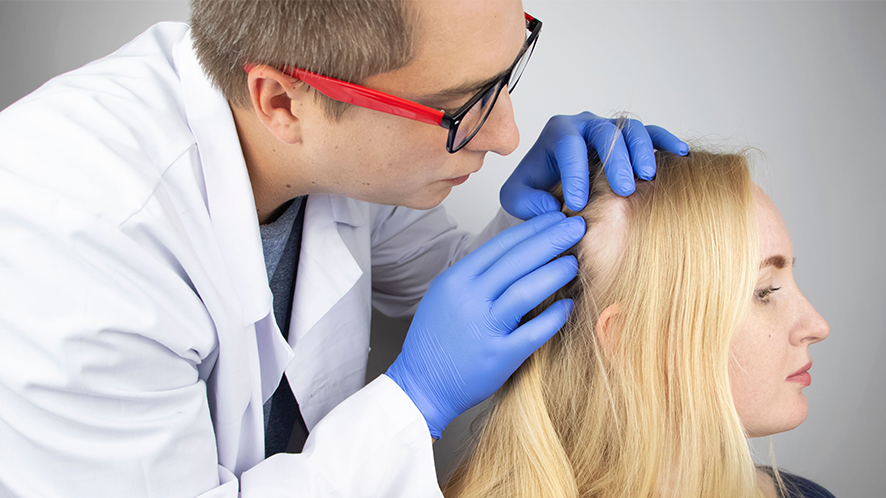
Alopecia areata refers to sudden hair loss. The immune system mistakenly attacks hair follicles, and the most common form of this autoimmune disease may be patchy baldness which could either be temporary or permanent depending on how severe it gets in some cases. Environmental factors and genetics might play a role in its development; however, no one really knows what causes Alopecia areata.
Alopecia is considered irreversible in most cases. However, this does not mean that the child cannot enjoy a head full of hair ever again. Various treatment options are available to restore hair growth or to mimic real hair on the head via alternative hair systems.
-
Alopecia Universalis
Alopecia Universalis is an autoimmune disease that causes complete hair loss on the body, including the scalp. While there is no known cure for it yet, treatments are available to help manage symptoms and improve quality of life.
Those who suffer from Alopecia Universalis have no choice but to let their hair fall out. The disease can be described as an autoimmune condition that affects the whole body, including on the scalp and head area, where strands are usually found in abundance.
There is currently no cure for this type of alimentation, so treatments only help manage symptoms effectively.
-
Diffuse Alopecia Areata

In this type of alopecia, hair thinning takes place instead of bald spots or patches. While it is better than balding, the loss of hair is still painful as the scalp becomes visible and hairstyling becomes difficult due to extremely thin hair.
The condition of sudden hair thinning instead of bald patches is a rare one. There is no known cause for this type, but there are treatments that can help the child deal with the problem if it arises.
-
Ophiasis Alopecia Areata
Hair loss in the form of a ring around the child’s head is called ophiasis alopecia areata. The condition can be extremely painful for a child to handle emotionally as the circular bald patches appear.
-
Trichotillomania
Trichotillomania is a disorder that causes children to pull out their hair, usually from the scalp. The child may do it in patches or all at once without realizing the aftermath.
This problem often starts during childhood years due to circumstances like excessive anxiety, which continue into adulthood where one will commit this act dozens if not hundreds of times per day without realizing how much damage he/she has caused themself by removing healthy follicles with force.
Hair loss due to trichotillomania is not permanent; however, the proper psychological treatment of the child is required to stop trichotillomania. Hair regrows once the excessive pulling subsides.
-
Nutritional Deficiencies

Nutritional deficiencies can cause hair loss in children. This is because the body’s nutrient intake affects how much growth factors are produced, which in turn determines whether or not the child will have an optimal level for healthy hairs’ healthily development process.
A lack of certain vitamins and minerals such as B6 (pyridoxine), zinc, copper, and manganese can cause hair loss in children.
One of the most important things you can do is make sure that nutrients like biotin and vitamin C (or other ingredients) do not go lacking in children’s diet. These vitamins promote healthy scalp cells, which produce thicker strands.
-
Thyroid
Hypothyroidism leads to hair loss in children. The thyroid gland is responsible for producing growth hormones. Underactivity of this gland will result in restrictive growth, weight problems, and hair loss. This type of hair loss is not, however, permanent and subsides on its own once the thyroid hormone starts functioning appropriately.
In this case, treatment is not required for hair loss rather for thyroidism. Therefore, it is important to consult the physician before starting any medication or treatment for hair loss. A physician runs a series of tests on your child in order to find the exact cause of hair loss.
-
Hormonal Disturbances
Children and teenagers are subjected to various hormonal changes during growth phases and puberty. This transition may lead to improper functioning or an imbalance of hormones, causing hair loss in young children.
-
Dandruff
The condition of dandruff can cause the child’s hair to fall off, but it is not contagious. Dandruff may be caused by a number of things, including dry skin or seborrheic dermatitis, to name a few.
Not shampooing enough or not cleaning the scalp properly could also lead to yeast overgrowth in the follicles, which further cause hair loss. Children may not clean or wash their hair and scalp properly, so it is important for caregivers to help young children maintain and follow hair hygiene.
-
Auto-Immune Disorders

Auto-immune disorders are a common cause of hair loss. It happens when the immunity cells start engulfing healthy cells inside the body. When hair follicles are targeted by these immunity cells, hair loss happens. The actual cause behind the auto-immune disorder is yet not known. However, hair loss can be prevented with proper alopecia treatment.
-
Genes
While some inherit thick hair from ancestors, others may get the tendency to develop alopecia. Genetics plays a major contributory role in deciding hair texture, thickness, length, and the rate of hair regrowth.
-
Cancer
Cancer, chemotherapy, radiation- all of it causes extreme hair loss in children. Cancer is a serious illness that causes many health problems, one of which is hair loss. While there are many treatments for cancer, hair loss is often one of the most difficult side effects to deal with. Fortunately, the hair loss is not permanent, and hair regrows once the cancer treatment is over.
Meanwhile, the child can wear wigs or toupees to cover the bald head. It takes a year to fully regrow hair after the cancer treatment. Since the scalp becomes sensitive after chemo and radiations, high-quality soft wigs are required for the child to wear comfortably.
What Are Treatment Options For Hair Loss?
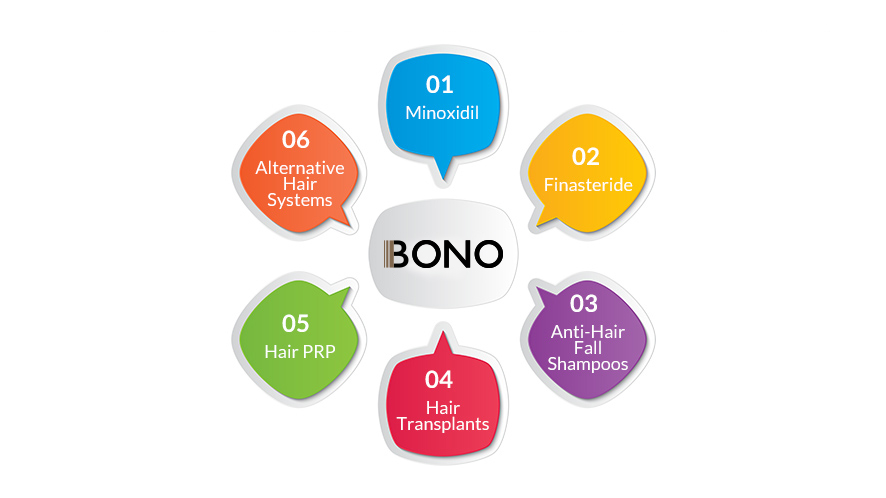
Minoxidil
Minoxidil (Rogaine) is an FDA-approved medication for treating alopecia or baldness. It is a medicinal spray that needs to be used every day for at least a year to see effects. Dermatologists frequently prescribe minoxidil to treat hair loss. If you start sooner and within six months, you may see faster results; the client may see rapid hair growth.
It can also be used to treat hair thinning in its early stages. Minoxidil is relatively safe to use without a prescription for adults; nonetheless, it is always best to see a physician before using anything with medicinal properties to minimize potential side effects for children.
Minoxidil may produce dryness, irritation, or redness on the scalp if used for an extended period of time.
Finasteride
Finasteride is a medication that the FDA has approved to treat benign prostatic hyperplasia or enlarged prostate. It can also be used to help reduce hair loss in teenagers; however, physicians may not prescribe oral medications to very young children.
This drug slows down the production of testosterone, slowing down hair fall. This, however, is not a permanent treatment of alopecia, and hair loss may return as soon as you stop taking the medication. Long-term medications can affect bowel movement and may cause stomach disturbances.
Another effective alopecia medication is Dutasteride which is more beneficial than Finasteride in some cases. However, you shall always consult a physician before taking any medication.
Hair supplements also work well in preventing hair loss or alopecia. Supplements, however, cannot treat alopecia.
Anti-Hair Fall Shampoos
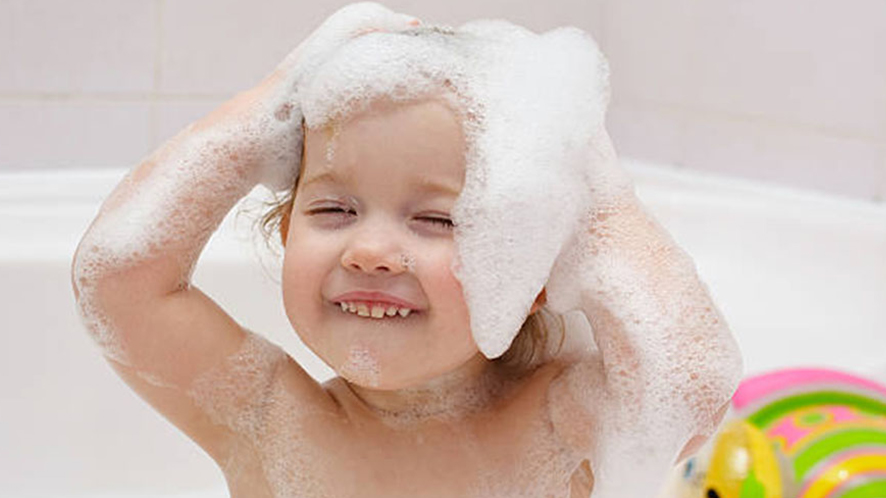
Medicated shampoos to treat hair fall are also common. Conditioners, shampoos, leave-in masks, hair regrowth sprays, and various anti-hair fall formulas are available in the market. Most of these products work well for seasonal or circumstantial hair loss. Alopecia may not recover from hair care products. Regular use of these products helps prevent hair loss in the long run.
Hair-fall shampoos and conditioners are rarely available for children, so it is better to ask the physician to prescribe a good medicated shampoo or scalp lotion that is specifically safe for children.
Hair Transplants
Hair transplants are one of the most popular and effective ways to restore hair loss. It is a medical technique that involves surgically extracting hair follicles from an area of hair growth and transplanting them into bald areas to restore hair growth. Hair transplant is an extensive procedure that requires two to three sessions depending upon the intensity of alopecia. The process is very expensive and unaffordable for many.
If you are considering a hair transplant for your child, it is important to understand the costs and risks. To help you make an informed decision about undergoing this procedure.
Hair PRP
PRP therapy (platelet-rich plasma) is a well-known alopecia treatment procedure. It is utilized in circumstances when hair follicles are thought to be deficient in oxygen. Drawing blood from the arm, extracting platelet-rich plasma from the blood, and injecting this plasma into the hair follicles are all part of the procedure.
Plasma stimulates hair follicles, resulting in hair renewal. PRP has been shown to be effective in the majority of cases; nevertheless, it does not work for certain women, and the reason for this is unknown. People who are heavy smokers or who live an unbalanced lifestyle with insufficient sleep and nutrition may not be able to profit from this surgery.
Alternative Hair Systems
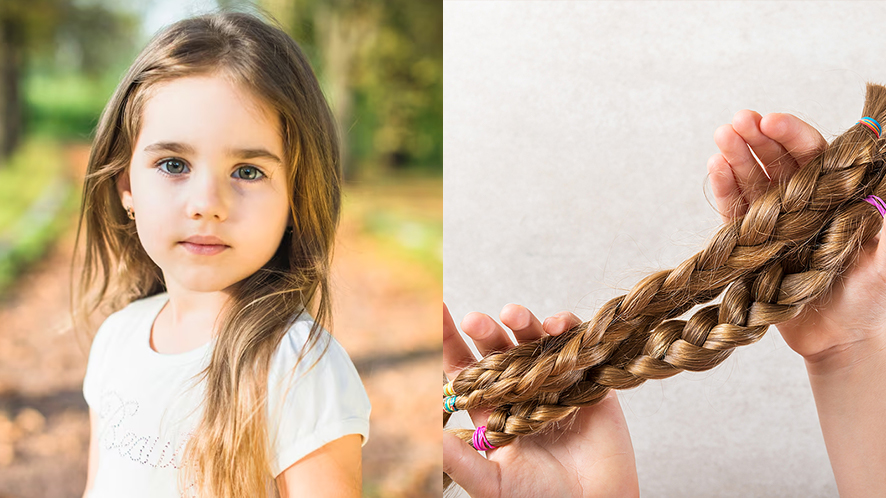
Medications for the treatment of alopecia have side effects, and long-term use may render a person to experience those effects. Hair transplant surgeries, on the other hand, are so expensive. Therefore, the best alopecia treatment that is quick, affordable, and instant is wigs and toupees.
These alternative hair systems provide a quick fix to cover bald spots. Another benefit of these systems is that the person can easily replace them in case they feel like changing hair color or hairstyle. Numerous wigs and toupees are now available in the market to choose from according to the style preference and budget. With proper care and maintenance, the wigs and toupees can last even up to a year.
Non-surgical hair replacement units are not only affordable but also quick in action. A most common type of hair replacement system is a full wig. Wigs provide full coverage hence are ideal for covering baldness. The hair color, texture, and length can be adjusted according to the requirement, so a wig is a customized alternative to expensive surgical hair replacement therapies.
Hair toupees are lighter than wigs and provide medium to low coverage. Toupees do not cover the entire head, unlike wigs. These are custom hairpieces that lay flat above the head, and hair blends in smoothly with the natural hair, giving off a naturally fuller look.
When To See A Doctor?
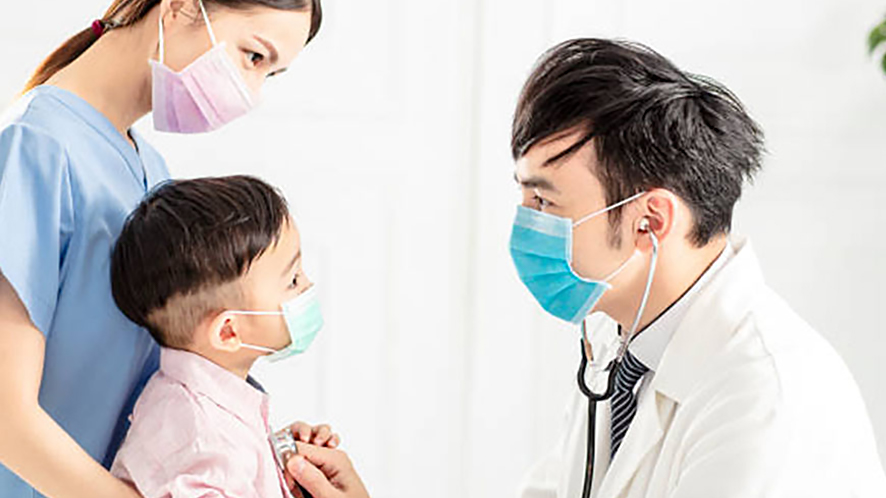
If your child is suffering from significant hair loss, it is not wise to stay at home and wait for the symptoms of this disease. Often early preventions help stop further balding before it is too late. Slowing down these losses can be easier than stimulating regrowth which may take years in some cases.
The doctor will rule out any possible causes of your child’s hair fall and then offer a plan to help them grow their locks back.
Hair regrowth can take time, so the child is expected to be counseled appropriately by the doctor. The physician will also check how intense the child’s problem is before diagnosing and will suggest if the issue may resolve on its own or requires extensive treatment.
In most cases, hair loss does not happen overnight and develops gradually. The best time to see a doctor is when hair starts to fall off in clumps, and the scalp becomes visible. It is easy to identify the right time to consult a doctor if you are aware of the stages of hair loss.
Stages of Hair Loss
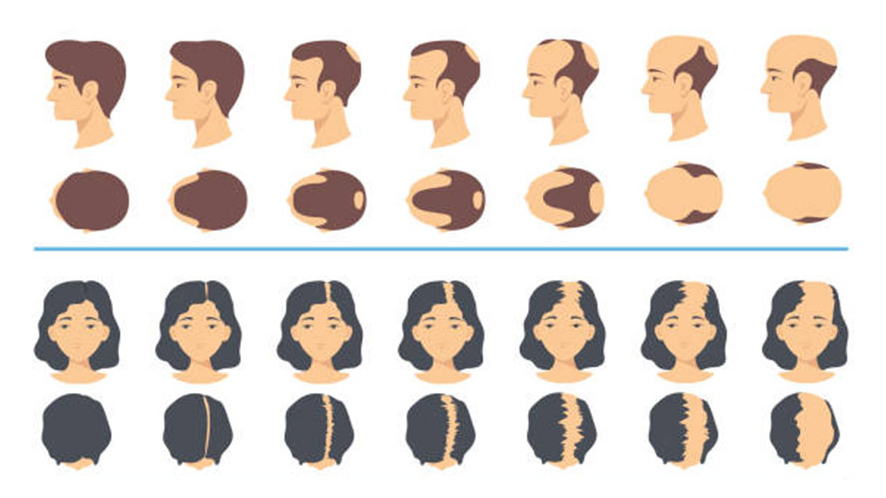
Initial hair loss is a delicate balance between thinning and balding. The symptoms are usually so mild that they go unnoticed. Hair starts to fall off in clumps; however, the scalp is still not visible, due to which many people confuse it with normal hair fall. It is important not to brush off severe hair fall as simple seasonal hair fall or growth-related hair loss. If left untreated at this stage, the hair loss can lead to progressive stages were bald spots start to appear.
In the next phase, the hairline starts to thin and become more prominent. You may notice that the hair around the child’s temples feels thinner, and the hair texture is becoming finer. The scalp also starts to appear due to ceased hair regrowth.
Bald spots may start to appear afterward. The scalp at this stage has lost enough hair to be diagnosed as a clinically bald head. The right time to consult a physician is as soon as the hair fall sets in. Remember, early diagnosis is half the cure; thus, consulting the physician early can save the child from permanent baldness or progressive hair loss.
The loss of hair can be a very scary and frustrating experience. But with the right treatment, it is possible to regrow hair within months.
Consultations from physicians such as dermatologists or pediatricians promote the chances of achieving success; otherwise, permanent baldness or thinning could result if childhood hair loss is left untreated.
Wigs For Kids
How To Choose A Wig For Children?
When a child needs a wig, the choices can seem overwhelming.
How do you select the right wig for any child? What are the factors to consider? This section will help guide you through the process.
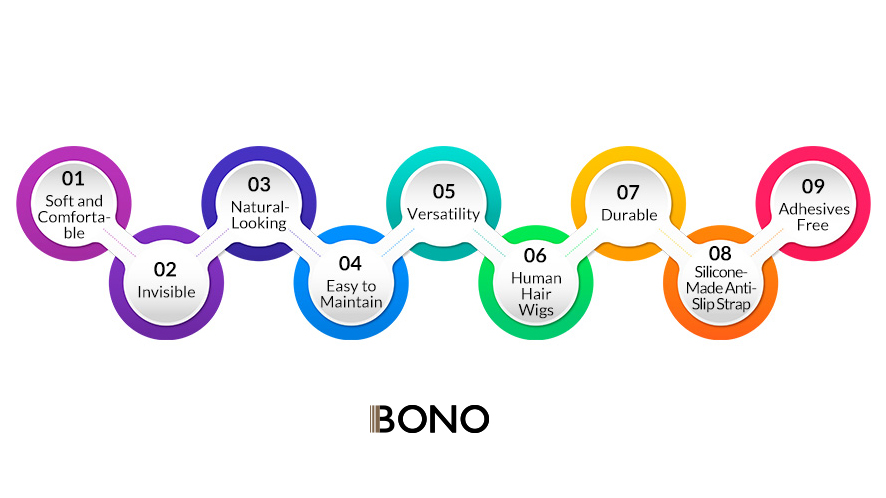
Children Wigs Must Be Soft and Comfortable
Children are unable to wear uncomfortable wigs. The additional burden of a hairpiece can be overwhelming for children. Thus, the hairpiece needs to be extra soft and comfortable.
Traditional wigs are manufactured with synthetic poly material or any other fabric that is not soft enough. Fashion wigs are perfect for those who want to wear wigs temporarily or for aesthetic purposes. Those who wish to cover the head almost all day require more comfortable wigs.
Children’s wigs, therefore, are manufactured with premium quality soft fabric. The fabric is either silk lace or monofilament transparent material to maximize comfort and breathability. These materials allow the oxygen to pass through the hair system and reach the scalp, protecting the scalp from damage or irritation. The softness of the fabric does not cause itchiness on the scalp as well.
Base Needs to Be Invisible
Children’s wigs are made to help users regain their confidence. The main point behind manufacturing customized wigs for children is to mimic the natural hairline to the extent that it becomes undetectable. Once the wig is worn, no one around the wearer shall be able to tell the difference between real hair and wig.
The hair strands in children’s wigs are either hand-tied to the base or injected in such a manner that the whole wig looks like a real scalp with naturally grown hair. The wearer can easily style the wig, choosing central or side parting.
Natural-Looking Wig Is Recommended
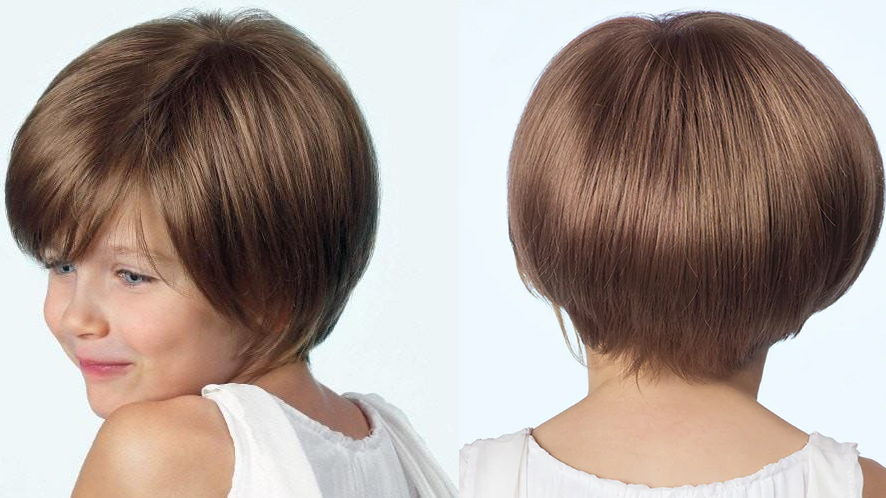
People who use wigs for aesthetic purposes such as Cosplay or Halloween often feel no shame in accepting that they are wearing fake hair; however, those who actually need hairpiece support do not want others to figure out their unnatural hair. Ironic, right?
Children’s wigs are specially designed to help the sufferers wear wigs without facing people’s opinions and queries. These wigs are always tailored to perfection in order to provide the users with a realistic-looking hairpiece. The hairpiece resembles natural hair so much that even the wearers seem to forget they are wearing an unnatural hairpiece.
This way, other kids would not be able to bully the child for experiencing baldness.
Children Wig Must Be Easy to Maintain
Ideally, the wigs for children must not require extra care in the name of maintenance. Cosmetic surgeries or hair transplants have post-surgery care, while medications have side effects, so both treatment options are not viable for children. Wigs can be a great option if they are easy to maintain since a child cannot take care of the hairpiece as much as an adult.
Customized wigs by Bono Hair can be easily washed with mild wig cleaning formulas. There is no need to buy special cleaning agents or shampoos. Since these wigs are made with natural human hair, it is suggested to use heat protectant spray before using heating tools or going out in the sun for a longer time. This will increase the lifespan of children’s wigs.
Versatility Is a Plus
You may come across a client who lost natural hair but now wants to try something different. Perhaps a new hair color or a new hairstyle. Children’s wigs allow the wearer to enjoy the prestige of trying out new hairstyling ways.
Your customer may even ask to try on a different hair texture and choose kinky curly afro hair over natural silky straight hair or vice versa.
These wigs help wearers fulfill their dream of having a head full of hair. These wigs can be referred to as a pure blessing in disguise.
Human Hair Wigs Are Ideal For Children
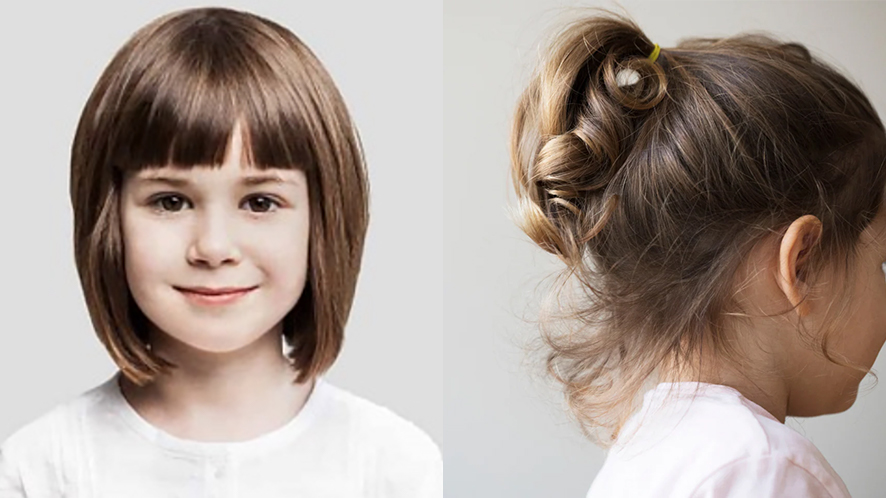
Order wigs that are made with 100% natural human hair. People often donate hair to significantly help cancer patients who lose their precious natural hair after chemotherapy. These hair strands are woven into medical wigs. Human hair outshines other regular wigs because of its durability and natural appearance.
Your customers can also send their hair to get a customized medical wig. Bono’s hair has trained children wig specialists who make tailored medical wigs as per your customers’ requirements. Order with us to bring forth a quality that your customers will cherish for a long time.
Click HERE to Order Wigs for Children
Stitching Should Be Durable
Children are accustomed to rough indoor play, hectic school schedules, and playground activities, so they require sturdy wigs.
Children’s wigs by Bono Hair are manufactured after taking into consideration the perfect head size and head circumference of the wearer. Tailored hand-sewn stitching is offered to maximize the comfort level and grace of a wig.
The soft stitching makes the wig wearable all day long. Our wigs can easily be worn 24 hours. However, it is recommended to remove the wig before sleeping. Otherwise, the friction can cause hair strands to fall off.
Sleeping over a wig robs the hair of its shine and smoothness. Suggest your customers remove their hairpieces before going to bed if they wish to enhance the life span of their wig.
Silicone-Made Anti-Slip Strap Is Required.
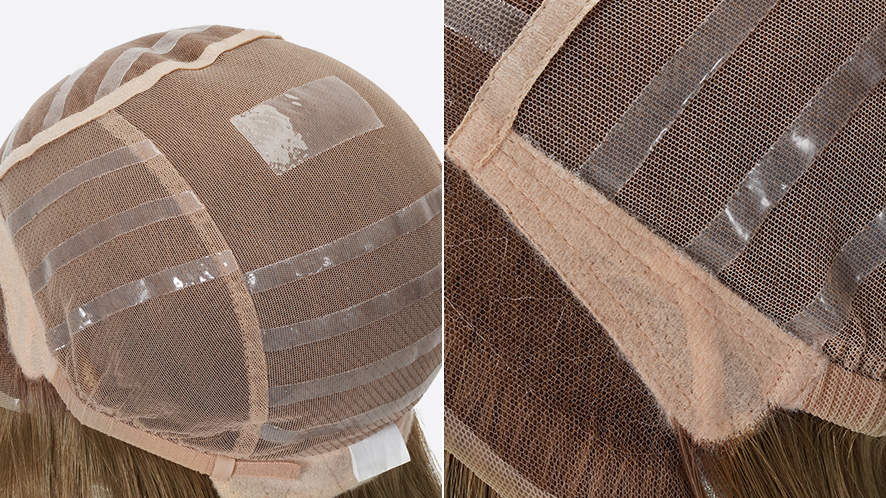
A silicone anti-slip strap is attached to the sides of the children’s wig to offer easy installation. This strap fixes the wig over the wearer’s head tightly. Silicone has an ultra-smooth texture that does not scratch the scalp; therefore, it is widely used to manufacture cranial prosthesis.
Some children’s wigs have stretchable silicone base caps. In this type of wig, a silicone piece is attached in the middle, while the sides are of either silk lace or monofilament material. The stretchable cap allows the user to wear the wig like a headband. Elastic bands are also often attached inside the base cap to offer maximum security and hassle-free installation.
Even beginners or those who have never worn a wig before can quickly wear customized children’s wigs.
Adhesives Free Wigs Are Recommended For Children
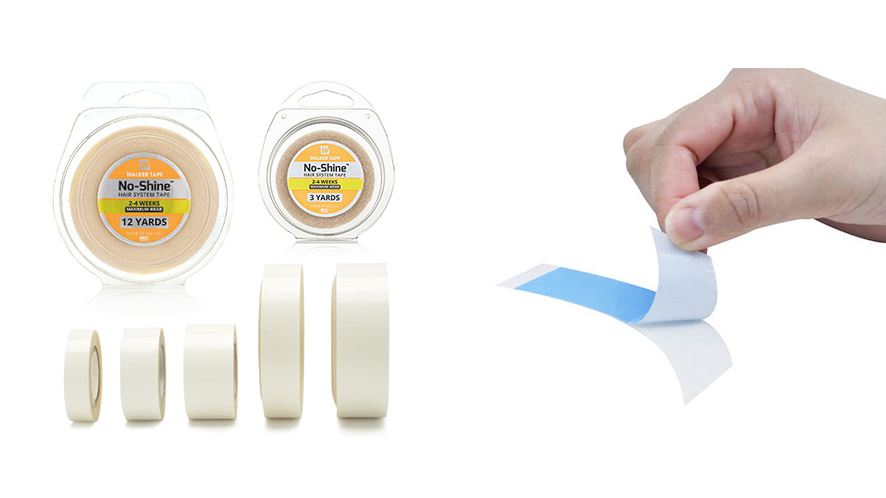
It is relatively harder for children to apply adhesives daily and set the wig on the scalp daily. Removing the adhesive could also be a hassle for children.
Customized wigs for children by Bono Hair are supported by a silicone base and adjustable straps to avoid the need for adhesives or hair glue. Adhesives can damage the scalp. Hair glue or hair tape can cause itchiness on the scalp. Hair glue is not recommended since those suffering from medical hair loss already have a sensitive scalp.
Customized children’s wigs are manufactured uniquely. These hairpieces do not require any adhesive and can be easily worn or removed without any hassle. Some wigs come with clips to install the wig securely on the head.
How To Clean And Maintain Wigs?
Keeping the wigs clean and in good condition is essential to increase their longevity. Wigs can be expensive, so it is important to take care of them properly. In this section, we will guide you on cleaning and maintaining your wigs, so they look great for years to come. Stay tuned!
 Avoid Over-Washing
Avoid Over-Washing
Wigs come in many different styles and materials that can be damaging if not cared for properly. Over-washing may ruin your wig, so it is important to know the right cleaning instructions depending on how often the child wears them.
If the child uses the wig daily, then wash the wig twice a month in order to keep the wig clean and debris-free.
Use medicated mild formulas to wash the wig. Regular shampoos have stronger formulas and chemicals which damage the hair knots, causing the hair to fall off. Gentle soaps are better to clean the wig. Soak the wig in a tub filled with water and mild soap and leave it for 15 to 20 minutes. Wash off the wig under cold running water and use a wide-tooth comb to detangle the strands.
 Do Not Apply Hair Creams or Masks
Do Not Apply Hair Creams or Masks
Though children’s wigs have natural hair, they still cannot absorb moisture and nutrients from rich formulas. The heavy formula of cosmetic creams and masks would damage this delicate fabric over time which could cause tangles or, even worse – breakage.
Note that absorbing nutrients is the function of the scalp and not hair strands. Children’s wigs do not have scalp support so using heavy creams loosens the hair knots.
 Avoid Heating Tools
Avoid Heating Tools
Children’s wigs only have human hair. It cannot absorb natural oils from the skin, which is why avoiding heating tools is necessary. Hating tools rob the hair of natural luster, which cannot be restored. Using heat protectant spray before curling or ironing hair can help balance the hair Ph.
Warn the caregivers to not blow-dry children’s wigs often and refrain from using heating tools excessively; otherwise the wig would not last longer.
 Protect From Environmental Damage
Protect From Environmental Damage
Wigs are delicate, so they should be protected from the sun and dry winds. The harsh climates of Earth can do damage to your child’s wig if you are not careful.
Using a hat or a turban can protect hair from environmental damage. Heat protectant spray works wonders if applied before stepping out in the scorching summer heat.
 Washing Rituals for Children Wigs
Washing Rituals for Children Wigs
Children’s wigs washing depends on the frequency and intensity of its usage. Those who use the wig daily for 10-12 hours must wash it every four weeks, while those who wear it the whole day need to wash it every two weeks for good hygiene.
Dirt and debris accumulate on the base cap and in the hair strands, making the wig look dull and unhealthy. Improper washing can cause the hair topper to frizz out. Therefore, routine care is mandatory for a shinier and glossy wig.
Never use regular shampoos, conditioners, or hair masks upon the children’s wig. Invest in good-quality shampoo and leave-in conditioners specifically formulated for children wigs as these are gentler products with fewer chemicals.
When you plan to wash the wig, soak it in a tub or sink for the recommended time, then rinse the residue gently with cold water. Place the wig on a stand and let it air dry.
 Remove The Wig Before Putting The Child To Sleep.
Remove The Wig Before Putting The Child To Sleep.
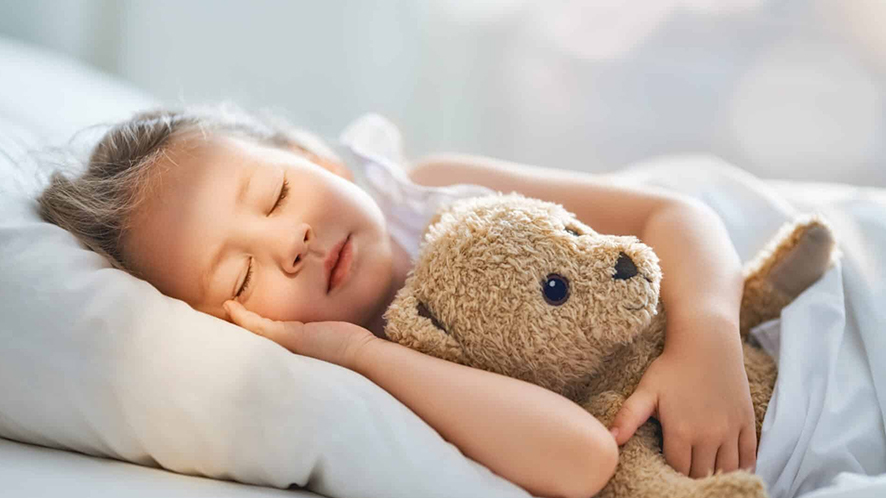
Sleeping in a wig is strictly prohibited. The built-in hair clips or adhesives could prove to be damaging for natural hair while tossing and turning in the bed at night. Removing the wig before sleeping is beneficial for both natural as well as wig hair.
Sleeping with a wig on can cause the hair to be tangled, which is a nightmare. Tangled wigs look frizzy, and friction also causes the hair to look frizzy; therefore, the wig must be removed before bedtime.
Additionally, the scalp requires oxygen for the natural hair regrowth cycle, and the base cap of the hair topper could hinder this process. Hence, removing the wig before sleeping is a must.
 Store the Wig Properly
Store the Wig Properly
When the wig is not in use, it is essential to store it properly in a box. Do not keep the wig in a small box; otherwise, the hair strands would tangle and it will be hard to use the wig next time.
Take a big box, big enough to lay the wig flatly. Wrap the wig in a plastic sheet then place it properly in the box. Keep the box away from excessive temperature to protect the hair texture of the wig.
Apply a thin layer of serum before placing the wig in the box to keep the wig hair intact, untangled, and frizz-free.
Where To Buy Kids Wigs?
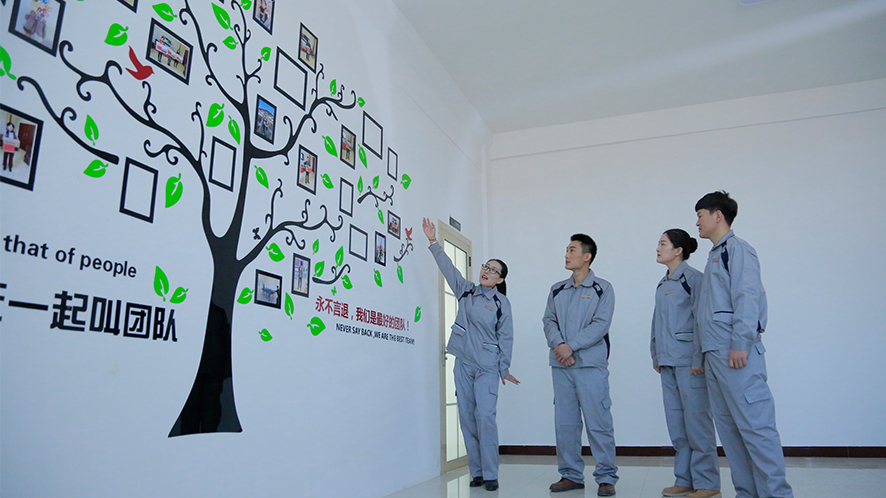
You should always buy from reputable manufacturers if you plan on selling wigs, hairpieces, or hair systems for kids. The materials used by non-reputable companies are often low-quality, leading suppliers and distributors to give unfavorable feedback.
Hair is often an important part of one’s identity, and it can also be a telling statement about who they are. At Bono Hair, we believe that each person should have the freedom to express themselves through their hair without worry or concern for how others will perceive them. Therefore, in our factory, we create long-lasting hair pieces with top-grade fibers to help distributors earn the confidence of their customers.
Customizing wigs for children is also an art that Bono Hair specializes in. Our skillful designers and workers offer unique wigs including customized measurements, capsize, hair texture, length, and style to help children regain the lost confidence.
We at Bono Hair offer high-grade hairpieces that are second to none in quality and price. We provide you with a variety of customizations and discounts on bulk orders.
Why Choose Bono Hair For Children Wigs?
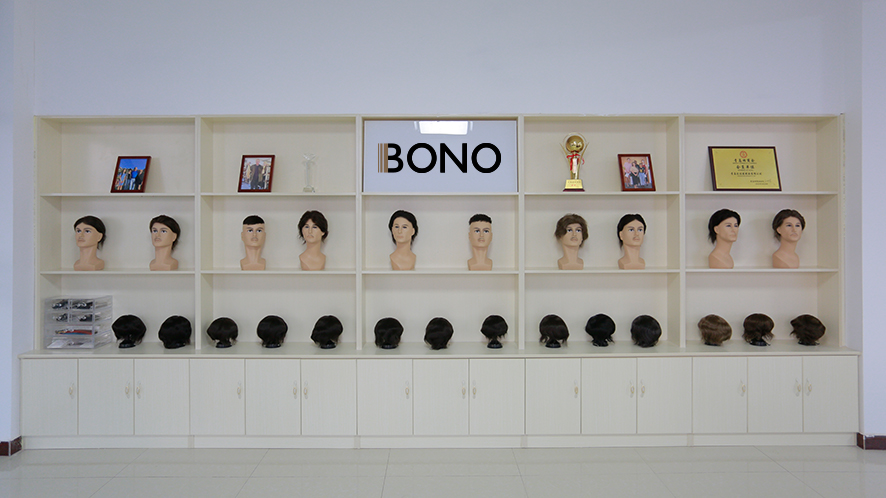
Bono Hair makes high-quality, customized wigs for children. We are committed to making a difference in little people’s lives with hair loss. As an organization specializing exclusively in wigs, we provide each wig with the attention and detail it needs to make a kid feel confident and give them their confidence back.
Bono Hair is also dedicated to educating others on how they can help these kids by donating hair to help pediatric alopecia. Bono Hair allows children with alopecia and other medical conditions, such as chemotherapy or lupus, regain their self-esteem while undergoing treatment.
You can also send us a sample of hair and we will create exactly the same wigs in terms of hair texture, color, and style. Organic wigs from the provided hair bundle by the client can also be tailored. We can dispatch the wigs to your customers by your name. Thus, you can easily build a reputable brand for yourself with us.
We are committed to supplying high-quality wigs at wholesale rates to the suppliers to help them increase their business thus our success lies in your growth.
Conclusion
Hair loss in children can be a daunting problem as the child is subjected to emotional as well as physical changes. Other children around may not understand the seriousness and bully the child for losing hair or having bald spots.
While the root cause of pediatric hair loss varies greatly, the common causes of such hair loss are poor hygiene, genetic vulnerability, auto-immune diseases, cancer, nutritional deficiency, and alopecia.
From medications to transplants, many treatment options are available for hair loss. However, not every treatment is suitable for children, and they may not be able to withstand the side effects of medicine and pain of invasive surgeries. Post-treatment care involved in surgical transplants may also create difficulty for children.
Thus, the ideal treatment for pediatric hair or hair loss in children is alternative hair replacement systems like wigs and toupees. These hair systems allow children to wear natural-looking hair within minutes. The major benefits of these systems are an affordable price tag, instant fix to hair loss, and zero side effects.
These systems allow children to select the hairstyle, length, and thickness they desire. Silicone straps and non-adhesive caps further allow a secure fix, increasing the child’s confidence. It is important to buy these systems from a reputable manufacturer who has specialized in making customized children’s wigs; otherwise, the child may not feel comfortable in his or her hairpiece.
Click HERE to Order Wigs for Children
Bono Hair is a revolutionary way for salon owners and distributors to buy wigs. Our goal is to make it easier for stylists, barbers, beauty professionals, and other hair care providers to find high-quality wigs that will last longer than any competitor’s products. At Bono Hair, we believe that every person deserves beautiful hair – no matter their age or circumstances.
We are committed to providing clients with everything they need from beginning to end, while maintaining sustainable practices throughout their business model.
Contact the support team to place bulk orders for high-quality customized children wigs!
Click HERE to Order Wigs for Children










